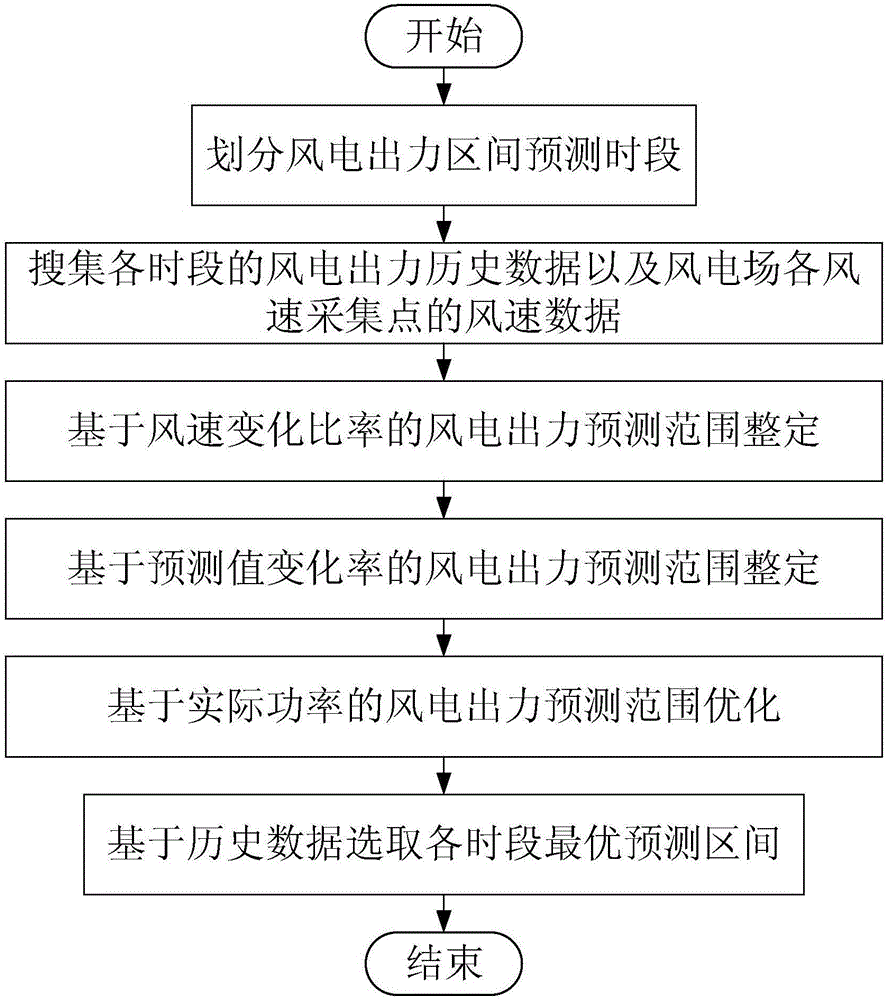Combined prediction method for wind power output interval
A technology of wind power output and prediction method, which is applied in the direction of instruments, data processing applications, calculations, etc., can solve the problems of unsteady natural wind speed and unfavorable wind power output prediction, etc., and achieve the effects of strong adaptability, improved accuracy, and good gain effect
- Summary
- Abstract
- Description
- Claims
- Application Information
AI Technical Summary
Problems solved by technology
Method used
Image
Examples
Embodiment 1
[0070] In this embodiment, the Matlab programming simulation platform is used to select the actual data of a certain wind farm during a certain period of time for analysis. Based on the actual historical data, three methods are used to predict, and the actual prediction effects of the three methods in each period are calculated. The best prediction interval is used as the optimal interval prediction method for this period. The forecast interval of each time period can be deduced by analogy to form an overall interval forecast.
[0071] Select historical data for a certain period of time for analysis, respectively use three methods for prediction, and compare the predicted results with actual data, and select the best prediction method (interval) for that period.
[0072] (1) Using the method of setting the forecast range of wind power output based on the wind speed change ratio, first predict the change rate of the wind speed at each time point, and use the BP neural network to pre...
PUM
 Login to View More
Login to View More Abstract
Description
Claims
Application Information
 Login to View More
Login to View More - R&D
- Intellectual Property
- Life Sciences
- Materials
- Tech Scout
- Unparalleled Data Quality
- Higher Quality Content
- 60% Fewer Hallucinations
Browse by: Latest US Patents, China's latest patents, Technical Efficacy Thesaurus, Application Domain, Technology Topic, Popular Technical Reports.
© 2025 PatSnap. All rights reserved.Legal|Privacy policy|Modern Slavery Act Transparency Statement|Sitemap|About US| Contact US: help@patsnap.com



